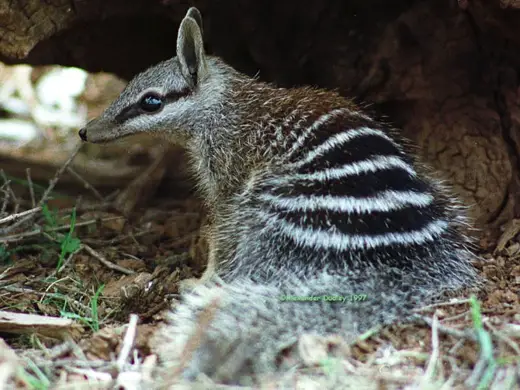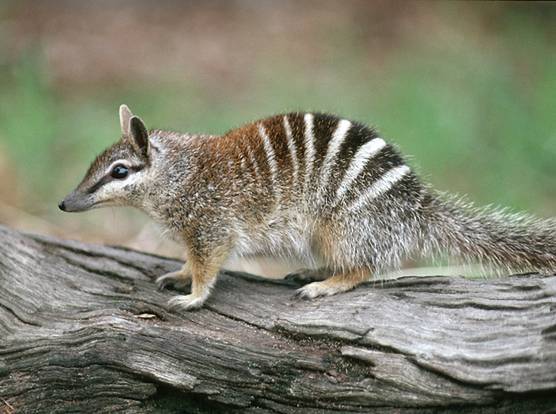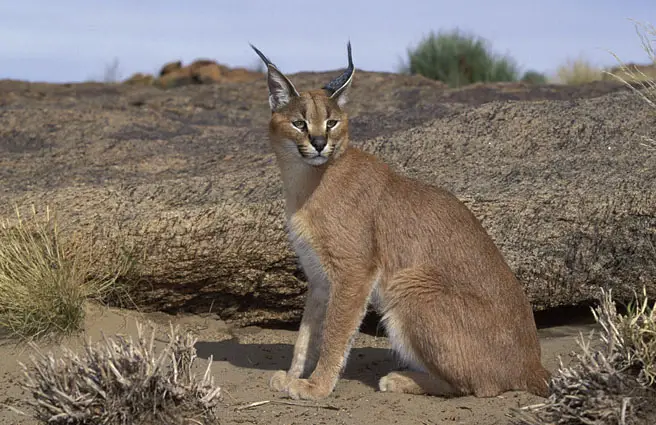Numbat
The Numbat is one of the most unique marsupials in the world, being a pouch-less marsupial. It is a small creature with a red brown coat that can blend from darker or lighter shades dependent upon the seasons at times.
Across its back will be bands of white with a long bushy tail. Every animals markings are unique and individual so the Numbat can be recognized by its markings.
The Numbat is the emblem of Western Australia.

The Numbat, a pouchless marsupial
It is about two feet tall, with a tail that is between 6 and 8 inches long, and may weigh between 12 ounces and a pound an a half, or about 400-700 grams.
Numbats are native to Australia, living from southwest to south central, and east toward New South Wales, however they are primarily now restricted to the western portion of this range, southwestern West Australia.
Numbats occupy temperate forests and rain forests, liking the ground cover.
Using a long sticky tongue they live on a diet of termites and ants and are actually classed as a type of anteater.
Although Numbats have not yet been classed as threatened or endangered, they are being reduced in numbers drastically across Australia, largely because of habitat being cleared for agricultural use, and destruction of the habitat by brush fires. Additionally, dogs, cats and foxes kill the slow moving and easy-to-catch Numbat.

The Numbat is one of the cutest animals on Australia
The most interesting thing about numbats is their teeth. Numbats have 50 or 52 permanent teeth—more than any other land mammal. Yet adult numbats do not chew anything at all ! Their diet consists almost entirely of termites, which they flick up with their long, thin, sticky tongue and swallow whole. They spend most of their time scouring decaying logs and soil for termites, of which a single numbat may eat up to 20,000 a day.
Science, having researched it, found that they use the teeth to move things along as they dig up the ants and termites, such as branches, twigs and so on.
They also may be used to shred the stringy bark of certain eucalyptus trees to produce their nest lining that has been found in hollow logs
The numbat will mate in the early summer and has an amazingly short gestation period of just fourteen days, after which it gives birth to 2 to 4 babies, usually in hollow logs.
In the wild the Numbat may live to about 5-6 years



Im 8 im doing reaserch on numbats and this helped me alot
im glad ur taking an interest about the numbats
i think numbats r sooo ardorable and same with any other living creature on earth i just hope people would look after our delicate world with all the animals so help the endangered animals population increase larger …… Thank u ……
im 11 yrs old and im doing a topic at school and we have to study the endangered animal and all that so please send a email to me and tell me what u know about our world and places and animals ……thank u……
well im doing reserch on murder under the microscope you should do that for your school next year im the same age as you.
well im doing reserch on murder under the microscope you should do that for your school next year im the same age as you.
Great photos, thanks for posting! : )